Channel Cat Vs Flathead Catfish Taste, Cleaning, Size, Overall Comparison
The Channel Catfish and Flathead Catfish differ in tail fin structure, taste preferences, dietary habits, and size. Channel Catfish have a deeply forked tail, a cleaner taste due to an omnivorous diet, and adaptability to various foods. In contrast, Flathead Catfish have a notched square tail, a carnivorous diet focused on smaller fish, and grow significantly larger. These distinctions contribute to varied preferences among catfish enthusiasts, with Flathead Catfish often being prized for their size and potentially having a higher market price. Recognizing these differences allows enthusiasts to appreciate the unique qualities each catfish type brings to the aquatic landscape.
I. Tail Fin Structure:
– Channel Catfish are recognized for their deeply forked tail fin, contributing to agility and maneuverability. In contrast, Flathead Catfish sport a notched square tail, providing a different set of swimming characteristics.
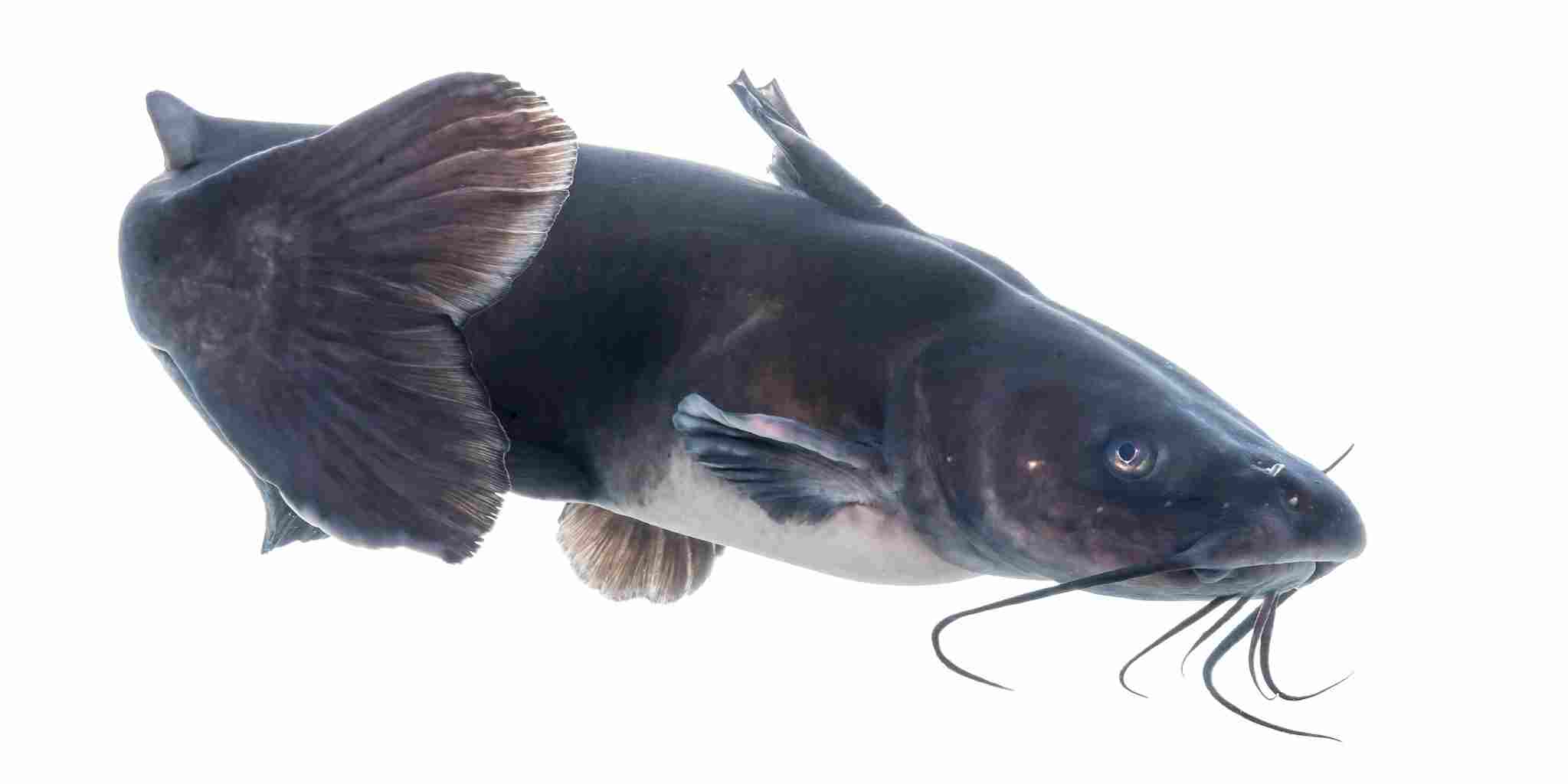
II. Taste Preferences:
– Channel Catfish, along with Blue Catfish, are often favored for their cleaner taste attributed to an omnivorous diet that includes vegetation. In contrast, some may perceive Flathead Catfish to have a slightly different taste due to their carnivorous preference for smaller fish.
III. Dietary Habits:
– Channel Catfish exhibit adaptability as omnivores, consuming a varied diet that includes both plant matter and smaller aquatic creatures. In contrast, Flathead Catfish are primarily carnivorous, focusing on smaller fish as their main food source.
IV. Size Disparities:
– Flathead Catfish typically grow to much larger sizes compared to Channel Catfish. The substantial size of Flathead Catfish contributes to their appeal among anglers seeking a more significant catch.
V. Pricing Variations:
– Flathead Catfish, often prized for their size, may come with a higher price tag in the market, although variations in pricing occur. Channel Catfish, with their adaptability and cleaner taste, may present a more accessible option for those considering catfish for culinary or recreational purposes.

VI. Appreciating Aquatic Diversity:
– Recognizing the distinctions between Channel Catfish and Flathead Catfish allows enthusiasts to appreciate the diverse qualities within the realm of catfish species. Whether it’s the taste preferences, dietary habits, or the thrill of catching a large fish, each catfish type brings its own unique characteristics to the aquatic landscape.
*Details of Comparison
| Criteria | Channel Catfish | Flathead Catfish |
| Taxonomy | Order: Siluriformes
Family: Ictaluridae Genus: Ictalurus Species: punctatus |
Order: Siluriformes
Family: Ictaluridae
Genus: Pylodictis
Species: olivaris
|
| Appearance | Slender body, forked tail, barbels |
Broad, flattened head, fewer barbels
|
| Size | 12 to 24 inches |
Often exceeds 30 inches
|
| Weight | 2 to 15 pounds |
Can exceed 50 pounds
|
| Cost | Generally more affordable | Can be pricier |
| Cleaning | Easier due to smaller size and smoother skin |
More labor-intensive due to larger size and rougher skin
|
| Taste | Mild, sweet flavor |
Rich, distinct taste
|
| Nutritional Value | Leaner meat, moderate fat content |
Higher fat content, richer taste
|
| Speed in Water | Moderate swimming speed |
Moderate to slow swimmers, adapted for ambush
|
| Senses | Well-developed sense of taste, sensitive to vibrations |
Enhanced sense of taste, specialized olfactory senses
|
| Physical Capacity | Agile swimmers, moderate endurance |
Strong and robust, adapted for ambush-style hunting
|
| Habitat Preference(s) | Rivers, streams, lakes with moderate currents |
Slow-moving rivers, large reservoirs, deeper waters
|
| Tracks | Subtle disturbances in sediments |
Distinctive tracks in muddy bottoms
|
| Lifespan | Around 15 years | Over 20 years |
| Mode of Feeding | Omnivorous, feeding on various aquatic organisms |
Primarily predatory, feeding on live fish
|
| Intelligence | Moderate problem-solving abilities |
Specialized intelligence for predatory behaviors
|
| Social Behavior | Often found in groups, especially as juveniles |
Generally solitary, particularly as adults
|
| Reproduction | Egg layers, scattering eggs in nests |
Mouthbrooders, males guarding eggs and fry
|
| Parental Behavior | Limited parental care after egg scattering |
Males actively guard eggs and fry in their mouths
|
| Proximity to Human-Inhabited Areas | Found in various freshwater environments |
Thrives in larger bodies of water, occasionally near human-inhabited areas
|
| Behavior Toward Humans | Generally wary, may adapt to human presence |
Often elusive and less tolerant of human disturbances
|
| Danger Posed to Humans | Generally minimal danger, rare instances of aggression |
Rarely pose a threat, caution advised, larger individuals may be more harmful
|
| Associated Precautions | Standard handling practices, avoid barbels and spines |
Exercise caution, especially with larger specimens
|
| Conservation Status | Generally not of high concern |
Populations may face localized threats, conservation concerns in some regions
|
1. Taxonomy:
Channel Catfish (Ictalurus punctatus):
Order: Siluriformes
Family: Ictaluridae
Genus: Ictalurus
Species: punctatus
Flathead Catfish (Pylodictis olivaris):
Order: Siluriformes
Family: Ictaluridae
Genus: Pylodictis
Species: olivaris
2. Appearance (Including Fin Morphology):
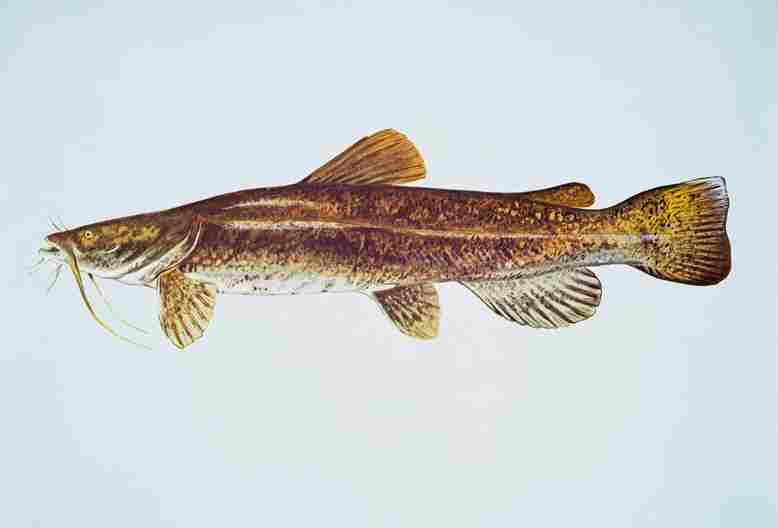
Channel Catfish:
Appearance: Slender body, deeply forked tail, barbels around the mouth.
Fin Morphology: Dorsal and pectoral fins with a sharp spine.
Comparison: Smoother appearance compared to the flathead catfish.
Ecological Implications: Adapted for agile movements in various aquatic environments.
Flathead Catfish:
Appearance: Broad, flattened head, rounded tail, fewer barbels.
Fin Morphology: Dorsal and pectoral fins with a dull spine.
Comparison: Distinctive flat head, giving it a more robust appearance.
Ecological Implications: Suited for bottom-dwelling, ambush-style hunting.
3. Size:

Channel Catfish:
Size: Typically smaller, ranging from 12 to 24 inches.
Comparison: Generally smaller than flathead catfish.
Ecological Implications: May be prey for larger predators in the ecosystem.
Flathead Catfish:
Size: Can grow larger, often exceeding 30 inches.
Comparison: Tends to be larger than channel catfish.
Ecological Implications: Predatory nature may impact smaller aquatic species.
4. Weight:

Channel Catfish:
Weight: Usually between 2 to 15 pounds.
Comparison: Lighter compared to flathead catfish.
Ecological Implications: Lesser biomass contribution to aquatic food webs.
Flathead Catfish:
Weight: Can reach weights exceeding 50 pounds.
Comparison: Generally heavier than channel catfish.
Ecological Implications: Potential to dominate in size-based competitive interactions.
5. Cost:
Channel Catfish:
Cost: Often more affordable due to smaller size.
Comparison: Generally less expensive for consumers.
Ecological Implications: Lower economic value may impact conservation efforts.
Flathead Catfish:
Cost: Can be more expensive due to larger size.
Comparison: Generally pricier compared to channel catfish.
Ecological Implications: Economic incentives for conservation may be higher.
6. Cleaning:

Channel Catfish:
Cleaning: Easier to clean due to smaller size and smoother skin.
Comparison: Generally less time-consuming compared to flathead catfish.
Ecological Implications: Reduced resource utilization for processing.
Flathead Catfish:
Cleaning: Requires more effort due to larger size and rougher skin.
Comparison: Cleaning can be more labor-intensive than channel catfish.
Ecological Implications: Increased processing may impact resource efficiency.
7. Taste:
Channel Catfish:
Taste: Mild, sweet flavor.
Comparison: Lighter taste compared to flathead catfish.
Ecological Implications: Favorable taste may contribute to higher demand.
Flathead Catfish:
Taste: Rich, distinct flavor.
Comparison: Stronger taste profile compared to channel catfish.
Ecological Implications: Culinary preferences may influence fishing pressure.
8. Nutritional Value:

Channel Catfish:
Nutritional Value: Leaner meat with moderate fat content.
Comparison: Lower fat content compared to flathead catfish.
Ecological Implications: May be perceived as a healthier dietary option.
Flathead Catfish:
Nutritional Value: Higher fat content, providing a richer taste.
Comparison: Higher fat content compared to channel catfish.
Ecological Implications: Potential impact on dietary choices and health perceptions.
9. Speed in Water (Km/hour or Mile/hour):
Channel Catfish:
Speed: Moderate swimming speed, adapted for agility.
Comparison: Generally not as fast as some predatory fish.
Ecological Implications: May rely on stealth more than speed for survival.
Flathead Catfish:
Speed: Moderate to slow swimmers, prefer ambush hunting.
Comparison: Speed may be less critical due to hunting strategy.
Ecological Implications: Adapted for ambush hunting rather than chasing prey.
10. Senses:
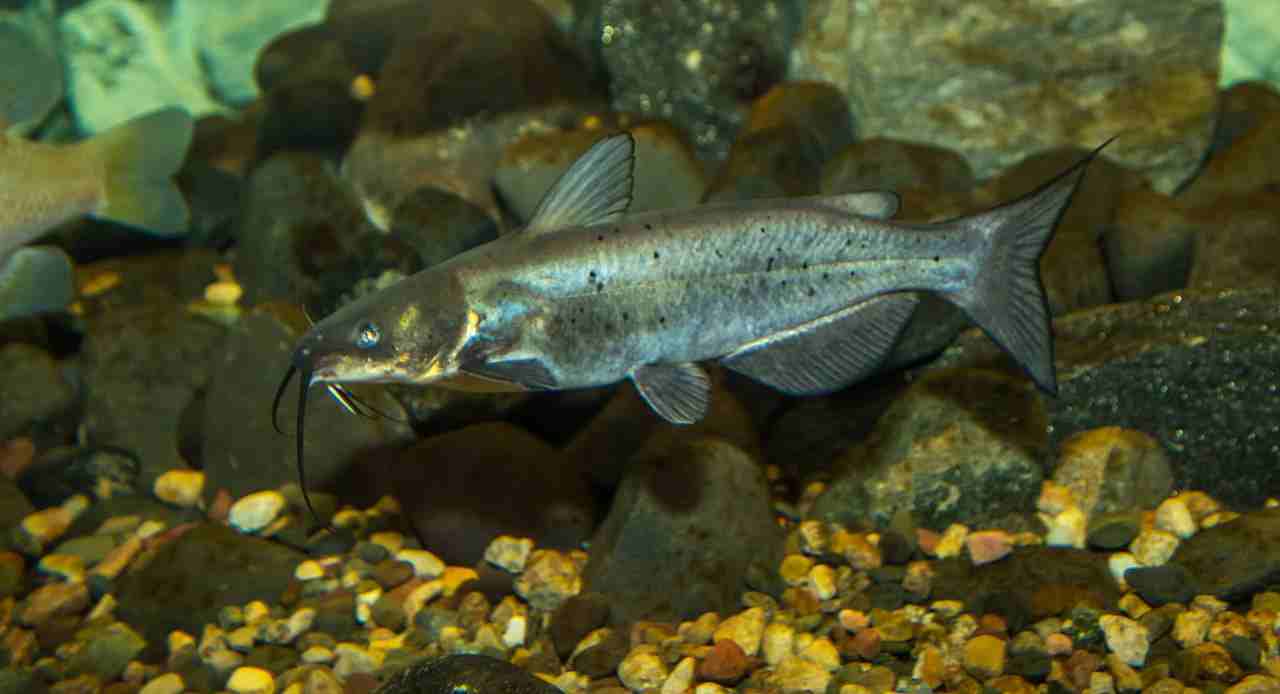
Channel Catfish:
Senses: Well-developed sense of taste and smell, sensitive to vibrations.
Comparison: Rely on sensory perception for locating prey and navigating.
Ecological Implications: Play a role in their ecological niche and hunting strategies.
Flathead Catfish:
Senses: Enhanced sense of taste, equipped for detecting prey scents.
Comparison: Relies on olfactory senses for locating food in murky waters.
Ecological Implications: Adapted senses contribute to its ambush-style hunting.
11. Overall Physical Capacity:
Channel Catfish:
Physical Capacity: Agile swimmers with moderate endurance.
Comparison: Adapted for various aquatic environments.
Ecological Implications: Versatile physical capabilities contribute to their ecological role.
Flathead Catfish:
Physical Capacity: Strong and robust, well-suited for bottom-dwelling.
Comparison: Excel in stationary ambush and short bursts of activity.
Ecological Implications: Specialized physical traits for their predatory behavior.
12. Habitat Preference(s):
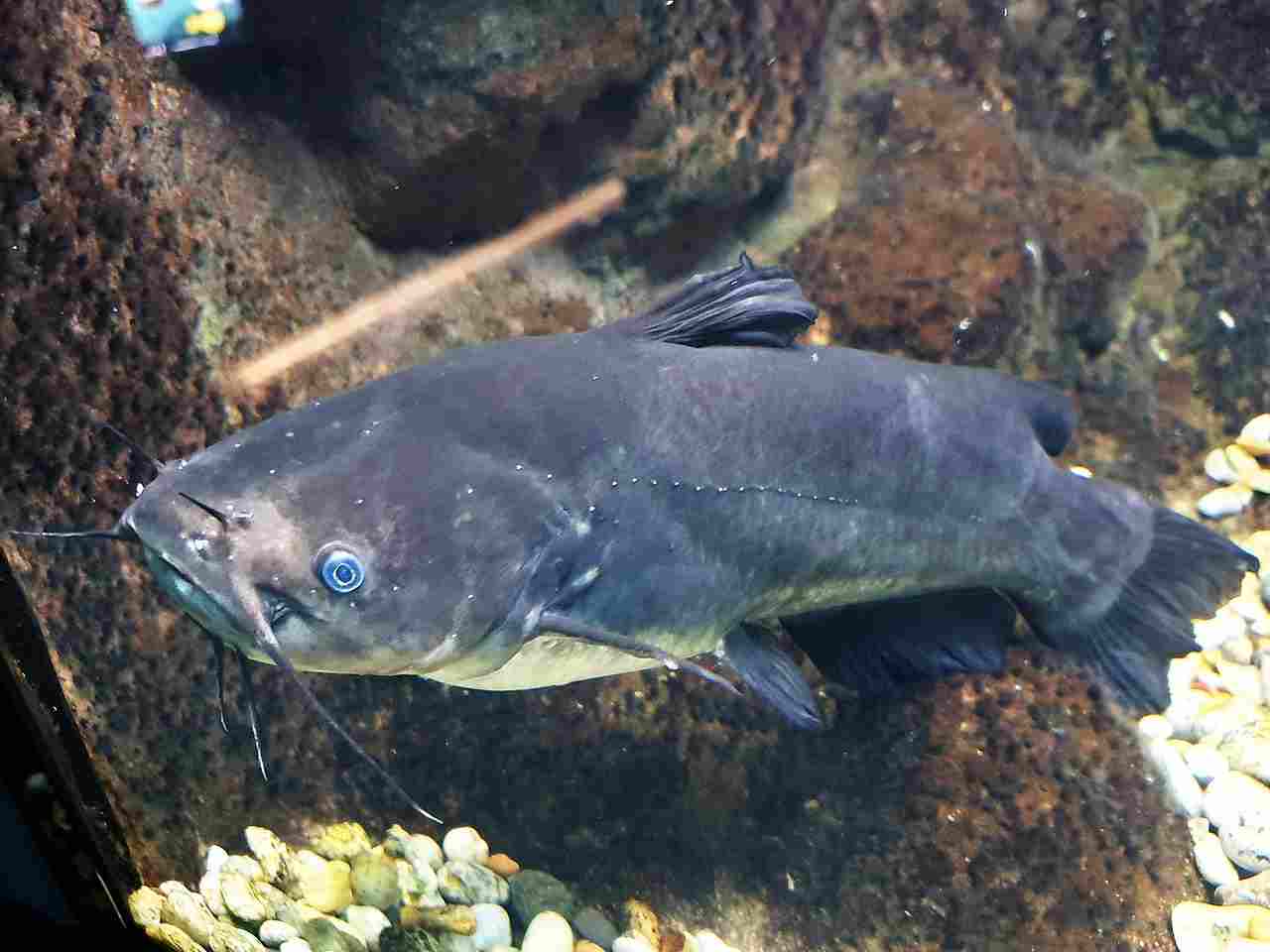
Channel Catfish:
Habitat: Prefers rivers, streams, and lakes with moderate currents.
Comparison: Adaptable to a range of freshwater habitats.
Ecological Implications: Plays a role in maintaining biodiversity in diverse ecosystems.
Flathead Catfish:
Habitat: Thrives in slow-moving rivers and large reservoirs.
Comparison: Prefers deeper, calmer waters for ambush-style hunting.
Ecological Implications: Influence on the composition of fish communities in specific habitats.
13. Tracks:
Channel Catfish:
Tracks: Leave subtle disturbances in sediments, indicating activity.
Comparison: Tracks may be less pronounced compared to larger bottom-dwelling species.
Ecological Implications: Minimal impact on the physical environment due to smaller size.
Flathead Catfish:
Tracks: Distinctive tracks in muddy bottoms near their resting places.
Comparison: Larger size may result in more noticeable tracks.
Ecological Implications: Indicators of their presence and impact on substrate disturbance.
14. Lifespan:
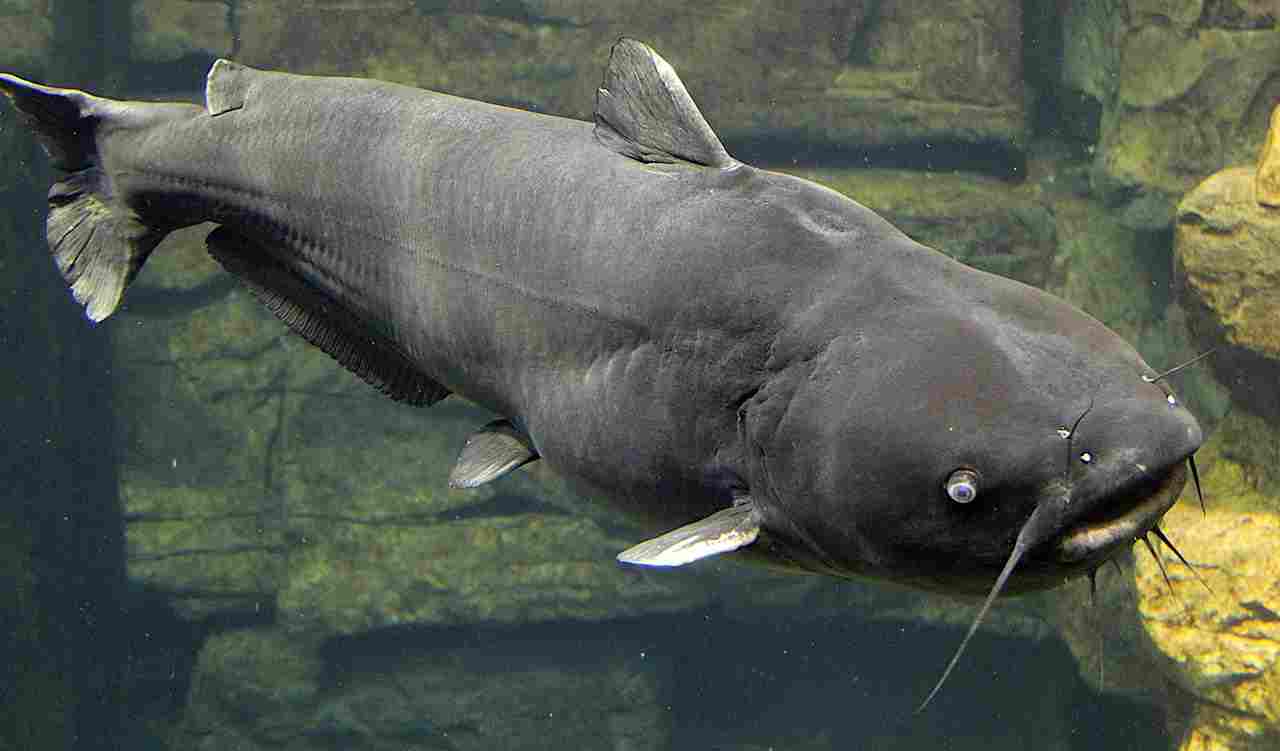
Channel Catfish:
Lifespan: Typically around 15 years in the wild.
Comparison: Shorter lifespan compared to some larger fish species.
Ecological Implications: Contributes to population turnover in aquatic ecosystems.
Flathead Catfish:
Lifespan: Can live over 20 years in favorable conditions.
Comparison: Longer lifespan compared to channel catfish.
Ecological Implications: Potential for greater cumulative ecological impact over time.
15. Mode of Feeding:
Channel Catfish:
Feeding: Omnivorous, feeding on a variety of aquatic organisms.
Comparison: More generalized diet compared to flathead catfish.
Ecological Implications: Plays a role in controlling populations of smaller aquatic species.
Flathead Catfish:
Feeding: Predatory, primarily feeding on live fish.
Comparison: Specialized diet focusing on larger prey items.
Ecological Implications: Potential impact on fish communities and trophic dynamics.
16. Intelligence:
Channel Catfish:
Intelligence: Display moderate problem-solving abilities.
Comparison: Generally exhibit adaptive behaviors in response to environmental changes.
Ecological Implications: Adaptive intelligence contributes to survival strategies.
Flathead Catfish:
Intelligence: Show strategic hunting behaviors, including ambush tactics.
Comparison: Demonstrates specialized intelligence for predatory activities.
Ecological Implications: Intelligence supports efficient hunting and survival.
17. Social Behavior:
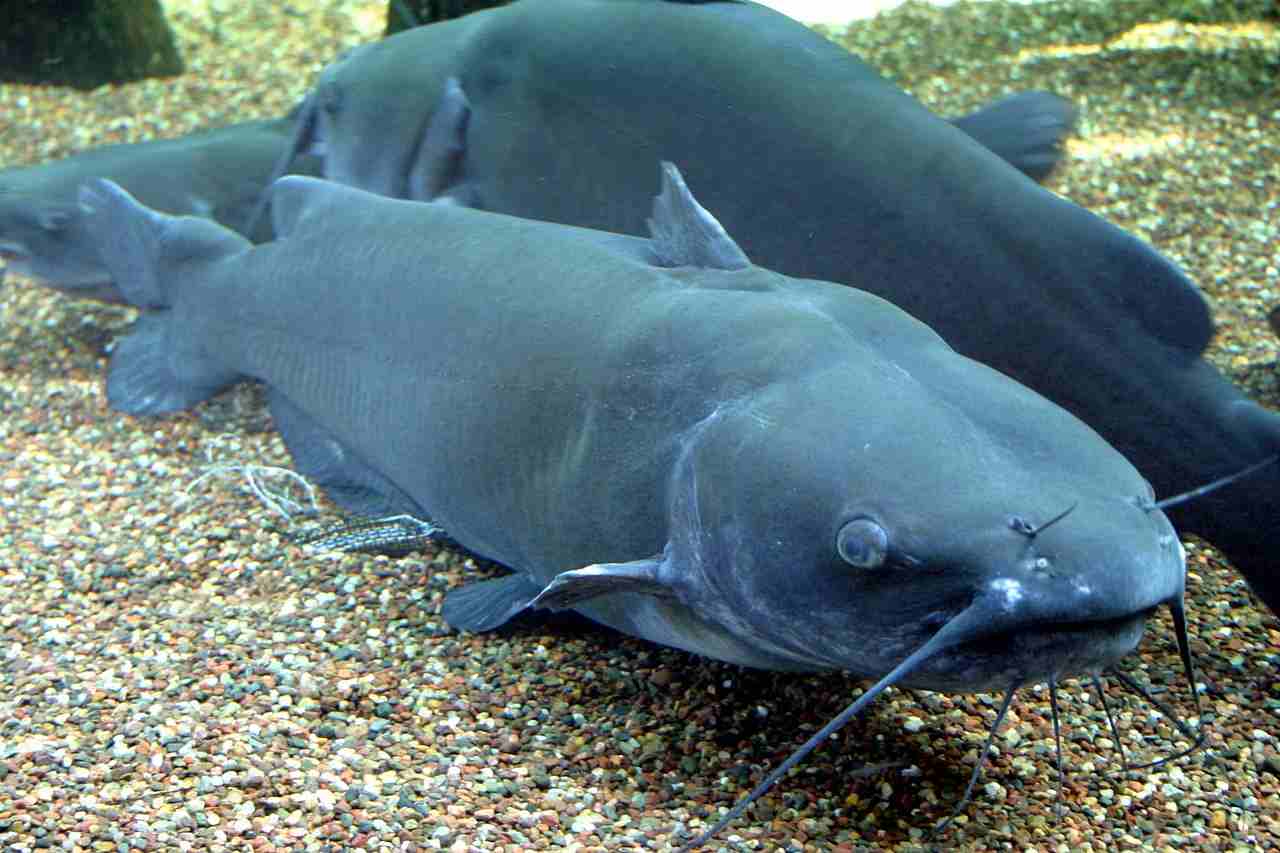
Channel Catfish:
Social Behavior: Often found in groups, especially as juveniles.
Comparison: Exhibit social tendencies in certain life stages.
Ecological Implications: Social dynamics may influence population distribution.
Flathead Catfish:
Social Behavior: Generally solitary, particularly as adults.
Comparison: Less social than channel catfish, often solitary hunters.
Ecological Implications: Solitary behavior may reduce competition within their preferred habitats.
18. Mode of Reproduction:
Channel Catfish:
Reproduction: Egg layers, scattering eggs in nests.
Comparison: Nests are typically constructed in sheltered areas.
Ecological Implications: Nests contribute to the overall reproductive success and population dynamics.
Flathead Catfish:
Reproduction: Mouthbrooders, with males guarding eggs and fry.
Comparison: Males protect developing eggs in their mouths.
Ecological Implications: Mouthbrooding behavior enhances survival chances of offspring.
19. Parental Behavior:
Channel Catfish:
Parental Behavior: Limited parental care after egg scattering.
Comparison: Parental care mainly associated with nest preparation.
Ecological Implications: Survival of offspring relies more on environmental factors.
Flathead Catfish:
Parental Behavior: Males actively guard eggs and fry in their mouths.
Comparison: Higher parental involvement in protecting offspring.
Ecological Implications: Increased parental care may impact population dynamics.
20. Proximity to Human-Inhabited Areas:

Channel Catfish:
Proximity: Found in various freshwater environments, including those close to human settlements.
Comparison: Tolerant of habitat modifications due to human activities.
Ecological Implications: Adaptability to human-altered environments influences population distribution.
Flathead Catfish:
Proximity: Thrives in larger bodies of water, occasionally near human-inhabited areas.
Comparison: May have more specific habitat requirements.
Ecological Implications: Less exposure to anthropogenic disturbances compared to channel catfish.
21. Behavior Toward Humans:
Channel Catfish:
Behavior: Generally wary but may adapt to human presence.
Comparison: More tolerant of human activities compared to some fish species.
Ecological Implications: Potential for coexistence in habitats with human interactions.
Flathead Catfish:
Behavior: Often elusive and less tolerant of human disturbances.
Comparison: More sensitive to human presence compared to channel catfish.
Ecological Implications: Human interactions may impact their behavior and habitat selection.
22. Danger Posed to Humans:

Channel Catfish:
Danger: Generally pose minimal danger to humans.
Comparison: Rare instances of aggression if provoked.
Associated Precautions: Standard handling precautions are generally sufficient.
Flathead Catfish:
Danger: Rarely pose a threat to humans; cautious handling advised.
Comparison: Larger individuals may have more potential for harm.
Associated Precautions: Caution required when handling larger specimens.
23. Associated Precautions:
Channel Catfish:
Precautions: Standard handling practices to avoid barbels and spines.
Comparison: Generally straightforward precautions during handling.
Ecological Implications: Minimal impact on human activities due to lower risk.
Flathead Catfish:
Precautions: Exercise caution due to potential for injury from larger specimens.
Comparison: Larger size may require more careful handling.
Ecological Implications: Increased precautions may influence human interactions.
24. Conservation Status:
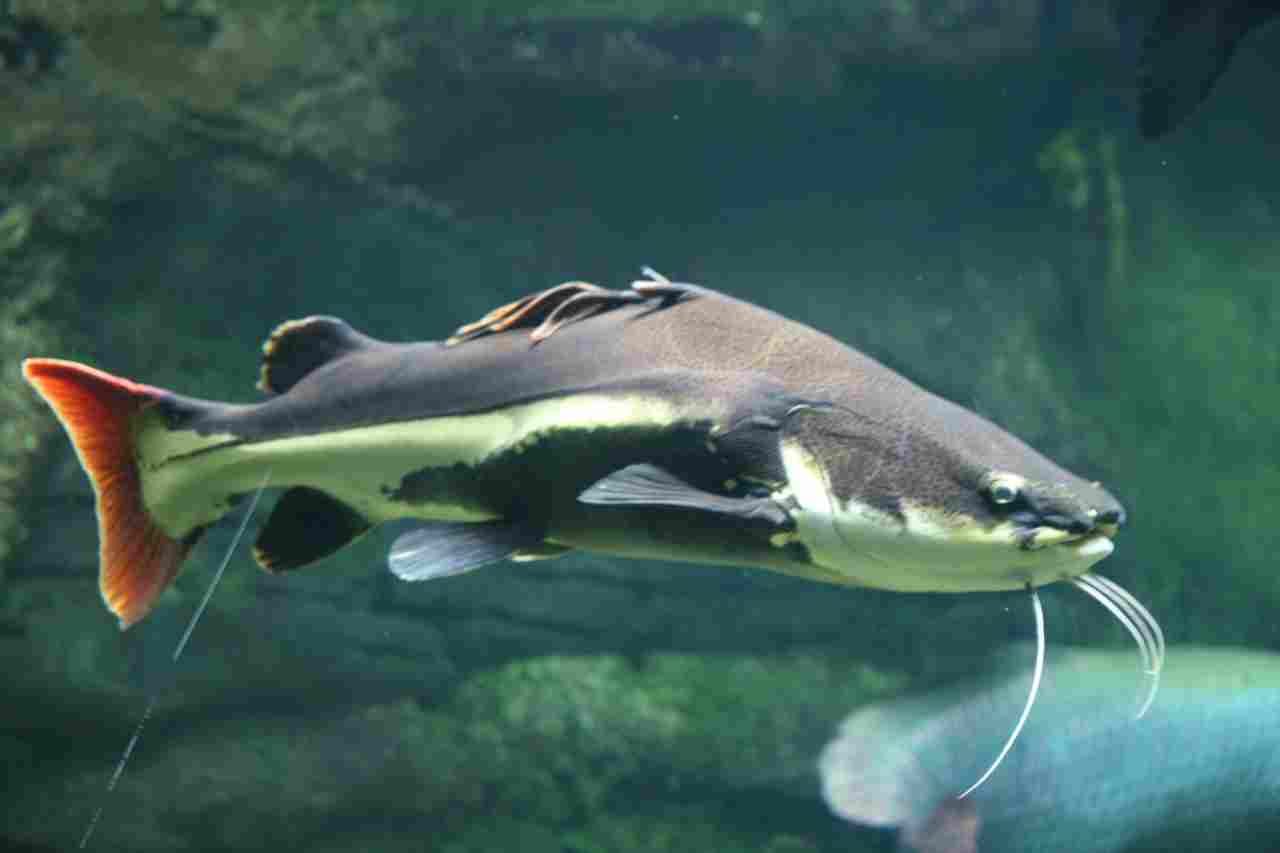
Channel Catfish:
Conservation Status: Generally not of high conservation concern.
Comparison: Populations may be stable in many regions.
Ecological Implications: Conservation efforts may focus on maintaining habitat quality.
Flathead Catfish:
Conservation Status: Populations may face localized threats; some regions may express conservation concerns.
Comparison: Localized pressures may impact certain populations.
Ecological Implications: Conservation strategies may vary based on regional dynamics.
Summary of Comparison
Similarities:
Both Channel Catfish and Flathead Catfish belong to the order Siluriformes and family Ictaluridae.
Adaptability to various freshwater habitats.
Differences:
Appearance:
Channel Catfish has a slender body with deeply forked tail, while Flathead Catfish has a broad, flattened head.
Size:
Channel Catfish is typically smaller (12 to 24 inches) compared to Flathead Catfish, which can exceed 30 inches.
Weight:
Channel Catfish is lighter (2 to 15 pounds) than Flathead Catfish, which can exceed 50 pounds.
Cost:
Channel Catfish is generally more affordable due to smaller size, while Flathead Catfish can be pricier.
Cleaning:
Channel Catfish is easier to clean due to smaller size and smoother skin, while cleaning Flathead Catfish can be more labor-intensive.
Taste:
Channel Catfish has a mild, sweet flavor, while Flathead Catfish has a richer, distinct taste.
Nutritional Value:
Channel Catfish has leaner meat, lower fat content compared to Flathead Catfish.
Speed in Water:
Both exhibit moderate swimming speeds, but specifics vary based on their hunting strategies.
Senses:
Differences in sensory adaptations; both rely on taste and smell, but Flathead Catfish exhibits specialized olfactory senses.
Overall Physical Capacity:
Channel Catfish is more agile, while Flathead Catfish is robust, suited for ambush-style hunting.
Habitat Preference(s):
Channel Catfish prefers a variety of freshwater environments, while Flathead Catfish thrives in slower, larger bodies of water.
Tracks:
Channel Catfish leaves subtle disturbances, while Flathead Catfish’s tracks may be more noticeable.
Lifespan:
Channel Catfish has a typical lifespan of around 15 years, while Flathead Catfish can live over 20 years.
Mode of Feeding:
Channel Catfish is omnivorous, feeding on various organisms, while Flathead Catfish is primarily a predatory species.
Intelligence:
Differences in problem-solving abilities and intelligence related to their specific behaviors.
Social Behavior:
Channel Catfish often found in groups, while Flathead Catfish is generally solitary, especially as adults.
Mode of Reproduction:
Differences in reproductive strategies – Channel Catfish scatters eggs, Flathead Catfish is a mouthbrooder.
Parental Behavior:
Varied levels of parental care, with Flathead Catfish showing more involvement in protecting offspring.
Proximity to Human-Inhabited Areas:
Differences in preferred habitats and tolerance to human disturbances.
Behavior Toward Humans:
Channel Catfish may be more tolerant of human activities compared to Flathead Catfish.
Danger Posed to Humans:
Both generally pose minimal danger, but caution is advised, especially with larger Flathead Catfish.
Associated Precautions:
Different handling precautions based on size and characteristics.
Conservation Status:
Channel Catfish is generally not of high conservation concern, while localized threats may impact Flathead Catfish populations.
Conclusion
I. Similarities:
Both are freshwater catfish species with economic and ecological significance.
Exhibit adaptability to various aquatic habitats.
II. Differences:
Differ in size, habitat preferences, reproductive strategies, and ecological roles.
Flathead catfish generally exhibit more specialized predatory behaviors.
Varied danger levels to humans and associated precautions highlight differences in their interactions with people.








